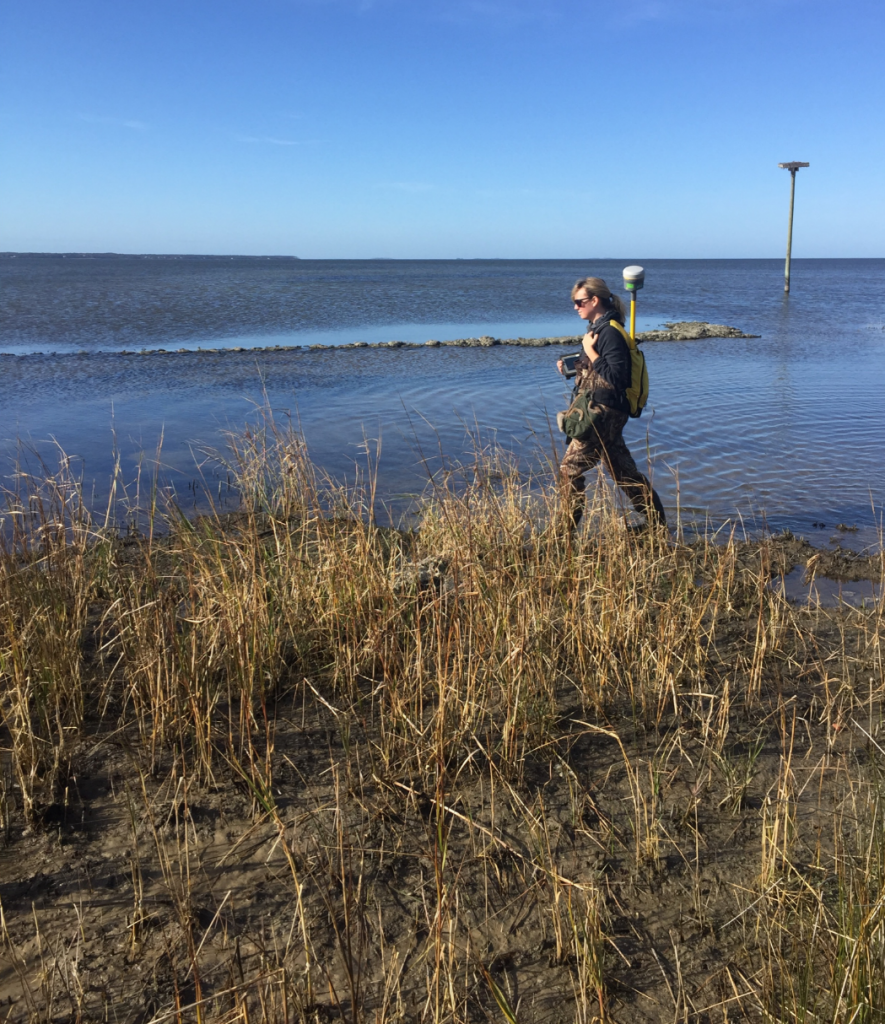
NCCOS approved an Event Response award of $15,778 for East Carolina University researchers and their partners to collect post–Hurricane Dorian data along the North Carolina coast. The research team, led by Dr. Rachel Gittman, is evaluating the condition of living shorelines and more conventional shoreline protection structures following the September 2019 storm. The researchers are also surveying North Carolina’s coastal residents for their perceptions about different shoreline protection designs.
Coastal managers typically prefer hard structures, such as sea walls or bulkheads, to protect coastal communities from the sea. However, natural and nature-based features—like marshes, sand dunes, and other types of living shorelines—can potentially offer similar protection, while also improving water quality, enhancing habitat for commercial and recreational fisheries, and adding to the coastal aesthetic that supports tourism.
Using previously monitored field sites, the researchers are comparing the condition of living shorelines and hardened shorelines following the hurricane, and how well each system helped coastal residents resist and recover from the storm. The survey targets residents with varying proximity to living shorelines and hardened shorelines and varying socioeconomic and demographic status.
The NCCOS Ecological Effects of Sea Level Rise Event Response Program studies how natural habitats can be an alternative to conventional engineering. The program provides immediate assistance for individuals to gather data before, during, and immediately after events that are difficult to plan for as part of a traditional scientific study.
